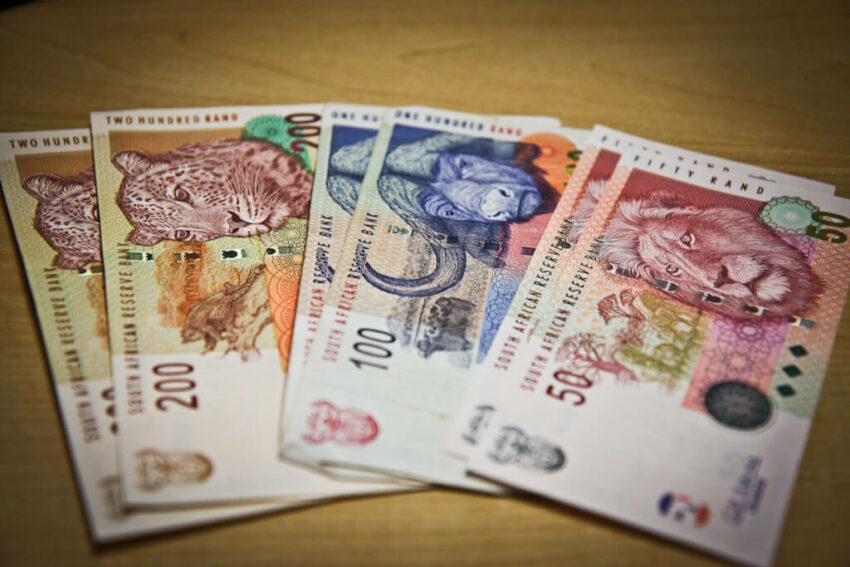Eskom’s Debt Has Decreased by R5.5 Billion, but the Pressure Remains High
- by Mamparra

Interest Payments on Eskom’s Debt Totaled R35.8 Billion over the Year
The exceptionally high debt burden that Eskom is carrying has proceeded to be a drag on the company’s financial performance. Eskom has been successful in reducing its overall debt to a greater extent. However, as the chief executive officer of Eskom, André de Ruyter, pointed out, the utility company’s unmanageably debt levels persist to gravely impede its operational processes.
According to the quarterly earnings of Eskom’s business for the year that closed on March 31, 2022, the debt of the electricity network decreased to R396.3 billion, down from R401.8 billion in 2021. On Friday, when De Ruyter was displaying the findings, he mentioned that Eskom’s debt burden “keeps playing an unprecedented role in the fiscal life of Eskom.”
Following a net loss of R25 billion in 2021, the utility’s key financial indicators all showed signs of improvement, which resulted in the utility reporting a loss that was significantly lower at R12.3 billion. Although Eskom’s operating cash flow increased from R31 billion to R53.4 billion, this was not enough to patch up the utility’s debt servicing expenses.
According to the internal audit of the utility, Eskom’s loan repayment profile will continue to face challenges both shortly and over the longer term. The overall amount of money spent on debt service during the year 2022 was R71.4 billion. In the year 2023, it is anticipated that this number will have increased to R79.5 billion.
Eskom’s interest and principal payouts on its debt will equal a total of R176.9 billion and R118.9 billion, respectively, over the course of the subsequent five years. Calib Cassim, Eskom’s finance director, stated that tackling the utility’s liabilities is critical to maintaining the company’s continued economic stability. On a more upbeat note, the decision made by the Treasury to assume a significant portion of Eskom’s debt is anticipated to release Eskom’s financial resources, allowing for a greater portion of those resources to be allocated toward the rehabilitation of Eskom’s aging coal-fired power plants.
During his speech on the government’s medium-term spending plan in October, the Minister of Finance Enoch Godongwana stated that the government would pardon between one-third and two-thirds of Eskom’s liabilities. Godongwana is supposed to present his budget in February 2023, at which time he will unveil the actual amount that will be allocated.
In his analysis, which was included in the financial statement, De Ruyter mentioned that Eskom is collaborating with the treasury to find a way out of the utility’s current financial predicament regarding its debt. “[W]e owe them an enormous debt of gratitude for their assistance in conceiving of a strategy by which Eskom could become more financially self-sufficient.”
The Treasury Department needs to determine how much money is required to get Eskom into a financially stable position. This decision will also be influenced by the choice of debt securities and the manner in which the debt takeover is carried out, both of which are topics that need to be addressed with Eskom’s creditors.
The decision regarding tariffs made by the National Energy Regulator of South Africa (Nersa), which was recently delayed, needs to also be taken into consideration by the Treasury. According to Cassim, Eskom’s financial performance is anticipated to decline as a result of a decrease in the supply of energy, low electric generation, and the company’s high utilization of gas-fired turbines fuelled by diesel.
Because diesel supplies are running low, load-shedding has continued into the holiday season, which has made the situation worse. The expenditure on gas-fired turbines accelerated by more than fifty percent, from seven billion rands in 2021 to fourteen and a half billion rands in 2022.
Chris Yelland, a power forecaster, tweeted that for week 50 in 2022, Eskom’s 5-day power flow component reached an all-time low of 50.73%. This followed a record low of 51.55% in the previous week’s data. At the close of the 2023 fiscal year, it is anticipated that the amount spent on diesel will have increased by R10 billion.
The steady decline of Eskom has incurred a significant cost to the economy. Some economists estimate that load-shedding at phase 6 will deal a blow of R4 billion for every day that the power outages persist. In a statement that was released by the monetary policy board of the South African Reserve Bank one month ago, the advisory board mentioned that load-shedding could reduce the GDP of the country by 0.6 percentage points in 2023.
Last week, De Ruyter announced his resignation from Eskom, stating “the operational problems, the financial difficulties, the challenges in maintaining sociocultural issues, such as corruption and criminality as well as some of the problems we have encountered in providing the restructuring of Eskom” and “support of the larger political economic system, and that assistance is utterly crucial to allowing the success of Eskom.” Several plants owned by Eskom have been hit by acts of sabotage, which has resulted in the deployment of members of the South African National Defense Force to those facilities.
Interest Payments on Eskom’s Debt Totaled R35.8 Billion over the Year The exceptionally high debt burden that Eskom is carrying has proceeded to be a drag on the company’s financial performance. Eskom has been successful in reducing its overall debt to a greater extent. However, as the chief executive officer of Eskom, André de Ruyter, pointed…
Recent Mamparras
- Is Virtual Sports Betting The New Frontier for Bettors in Ethiopia?
- The Accidental Aboriginal’s Legacy
- The Origins of Oktoberfest
- Fascinating Quick Facts
- Insect Winter Hideaways Decoded
- Decoding the Pharaohs’ Secret Language
- The Geological Marvel of Himalayan Formation
- Hetty Green – The Frugal Financial Genius
- Split Brain Syndrome
- Mosquito-Borne Cancer Pandemics
- Entertainment’s Sweet Surprise – Women in Cakes
